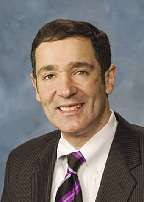The residential housing market went into a tailspin over a burst housing bubble and a whole lot of bad mortgages. The commercial real estate market has suffered a different sort of one-two punch.
Between the recession and the financial crisis, many commercial property owners were left struggling, and many banks were stuck with troubled loans on everything from shopping malls and hotels to office buildings.
The commercial real estate market's fortunes depend largely on free-flowing credit markets and cranked up spending by businesses and consumers - neither of which economists expect will happen anytime soon.
That means more commercial property loan defaults are likely, and that could mean trouble for the still-recovering U.S. banking system.
Here are some questions and answers on the problems facing the commercial real estate market, and what they might mean for the rest of the U.S. economy.
Q: What types of properties are considered commercial real estate?
A: Generally, there are five categories: office space, Industrial, apartment complexes, retail, hotels.
Q: How does the commercial real estate market fit into the U.S. economy?
A: By some estimates, the commercial real estate sector helps support more than nine million jobs and generates billions of dollars in taxes.
When the economy is growing, businesses' demand for space also grows. When demand is up, landlords enjoy low vacancy rates and steady income, and are more able to hike rates.
But when the economy slows or enters recession, as it is, the reverse happens.
Q: What's happened to the value of commercial real estate during the economic downtime?
A: So far, commercial property values have declined as much as 45% off their peak, Richard Parkus, an analyst with Deutsche Bank Securities, recently told a congressional committee examining the danger posed by rising commercial property defaults.
Q: Where are vacancy rates projected to go?
A: Marcus & Millicap Real Estate Investment Services projects U.S. vacancy rates this year will hit 17.6% for office space, 11% for retail, 12.6% for industrial and 8.2% for apartments.
One year ago, the vacancy rate was 12.6% for office space, 7.2% for retail, 9.4% for industrial and 5.7% for apartments.
Q: What happens when commercial property owners aren't making money, and can't refinance their loans?
A: Often if they can't find a buyer for their property or renegotiate an extension with the lender, they end up losing the property to foreclosure. Some, however, have filed for bankruptcy protection.
Q: What's the government doing to help?
A: Last month, the government opened part of the consumer lending program known as the Term-Asset-Backed Securities Loan Facility to commercial real estate loans. The hope is that will boost the availability of loans, helping to prevent defaults and facilitate sales.
Industry groups are now pushing for the government to extend this program through the end of next year.
Frank Bowser is vice president and Frank D'Ostilio is vice president and sales manager at George J. Smith & Son, Milford, Conn.
Tags:
Some questions and answers on the problems facing the commercial real estate market
April 13, 2010 - Connecticut










